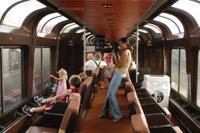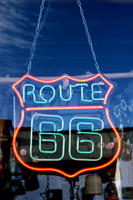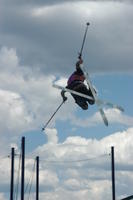Praising Arizona - Road Trip to the Grand Canyon
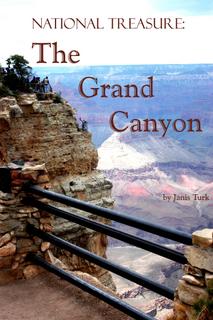
S ix of the Seven Wonders of the Ancient World no longer exist. Over time, even the finest man-made marvels eventually have met destruction. But it is said that, “Sights seen in the mind's eye can never be destroyed,” and only the natural wonders of our world stand timeless for eternity. Here in the United States, we are blessed to be caretakers of one of the world’s finest natural wonders: the Grand Canyon, America’s national treasure.
Although the Canyon itself is believed to be “only” about five or six million years old, some of the rocks at the bottom date back 2,000-million years, according to the National Parks Service. However old it may be, its beauty is eternal. So desolate, rugged, colorful and glorious, its impression has been carved for eternity into our nation’s soul.

At its deepest, it is a mile to the bottom of the Canyon and 4,000 feet deep for most of its nearly 300 mile stretch. The Grand Canyon National Park and World Heritage Site is 18 miles wide at its broadest point and encompasses 1,218,375 acres on the Colorado Plateau in northwestern Arizona.
To call it majestic would be an understatement.
Since the earliest natives first beheld its splendor, families have been making pilgrimages to the Canyon’s rocky cliffs—a place every American should visit. Ironically, though, a century ago no one expected much in the way of tourism: in 1858 U. S. Army Lieutenant Joseph Ives stated that the Grand Canyon area “is of course altogether valueless…. Ours has been the first, and will doubtless be the last, party of whites to visit this profitless locality." He was certainly wrong about that, for visit we do. Last year, alone, nearly 5 million people came to see the Canyon.
Getting there is half the fun
Just an easy, beautiful three-hour drive from Phoenix, or three and a half hours from Las Vegas, the Grand Canyon is not as remote as you might imagine, and getting there (especially to the spectacular South Rim) is not difficult. The drive itself provides a lovely exploration of some the most scenic places in the state. Passing through Sedona, stopping in historic Flagstaff, and
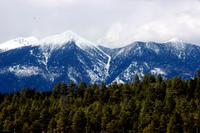 beholding the imposing snow-capped peak of Mount Humphrey dusted and glistening with snow, you’ll be amazed at the beauty of Northern Arizona. Forests and glens, Painted Desert and pretty mountains, Old West towns and Navajo reservations, stops to see ancient Native American ruins—it is all part of a grand adventure on the journey to the Grand Canyon.
beholding the imposing snow-capped peak of Mount Humphrey dusted and glistening with snow, you’ll be amazed at the beauty of Northern Arizona. Forests and glens, Painted Desert and pretty mountains, Old West towns and Navajo reservations, stops to see ancient Native American ruins—it is all part of a grand adventure on the journey to the Grand Canyon.Flagstaff

You may have heard of this town, but you probably never realized how small and lovely it is. Home to Northern Arizona University, one might expect to find a large, urban city; instead, it is a beautiful, close-knit community in the middle of a glorious ponderosa pine forest. [Arizona isn’t all desert and cactus!]
At 7,000 feet elevation, Flagstaff (or “Flag” as locals call it) boasts an annual snowfall average of 108.8 inches, yet it also enjoys an average of 288 days of glorious warm sunshine.
 As their Chamber states, “Flagstaff is rich with cultural diversity, beauty and history, as well as amazing educational, recreational and scientific opportunities.” It’s a stop on the way to the Canyon not to be missed. I suggest spending several nights there, taking time to visit the Museum of Northern Arizona, the Arboretum at Flagstaff (a botanical garden, research station, and environmental education center), and the charming historic district downtown. This spring, I had a delicious lunch at Charly’s in the Weatherford hotel, one of Flagstaff’s authentic Old West hotels, and took a tour of its old fashioned rooms, delightful lounges and wrap-around balconies. Later I wandered down the street, popped into art galleries and peaked into the Hotel Monte Vista, which is also said to be haunted. That night, I enjoyed a steak dinner and musical revue at Black Bart’s Steakhouse, Saloon and Musical Revue, where talented students from the University entertain guests when they aren’t busy waiting tables between songs. The show and the steak dinner were both rare treats, but my favorite Flagstaff haunt turned out to be “The Zoo.”
As their Chamber states, “Flagstaff is rich with cultural diversity, beauty and history, as well as amazing educational, recreational and scientific opportunities.” It’s a stop on the way to the Canyon not to be missed. I suggest spending several nights there, taking time to visit the Museum of Northern Arizona, the Arboretum at Flagstaff (a botanical garden, research station, and environmental education center), and the charming historic district downtown. This spring, I had a delicious lunch at Charly’s in the Weatherford hotel, one of Flagstaff’s authentic Old West hotels, and took a tour of its old fashioned rooms, delightful lounges and wrap-around balconies. Later I wandered down the street, popped into art galleries and peaked into the Hotel Monte Vista, which is also said to be haunted. That night, I enjoyed a steak dinner and musical revue at Black Bart’s Steakhouse, Saloon and Musical Revue, where talented students from the University entertain guests when they aren’t busy waiting tables between songs. The show and the steak dinner were both rare treats, but my favorite Flagstaff haunt turned out to be “The Zoo.”
 The Museum Club, a real honky-tonk road house with attitude and history, was once a unique (read weird) taxidermy museum built in 1931, which held oddities of nature such as two headed calves and extensive collection of taxidermy treasures. Often called “the Zoo,” this classic Route 66 landmark is a strange and wonderful edifice built around five living ponderosa pines which seem to grow through the floor which and hold up the ceiling. Entry to this curious place is directly through a wishbone-shaped tree trunk straddling the front door. The Zoo is said to be haunted by previous owners who obviously don’t care to depart, and I didn’t want to leave either but had plans to journey north at daybreak.
The Museum Club, a real honky-tonk road house with attitude and history, was once a unique (read weird) taxidermy museum built in 1931, which held oddities of nature such as two headed calves and extensive collection of taxidermy treasures. Often called “the Zoo,” this classic Route 66 landmark is a strange and wonderful edifice built around five living ponderosa pines which seem to grow through the floor which and hold up the ceiling. Entry to this curious place is directly through a wishbone-shaped tree trunk straddling the front door. The Zoo is said to be haunted by previous owners who obviously don’t care to depart, and I didn’t want to leave either but had plans to journey north at daybreak.Cameron

While heading out of Flagstaff, stop to see the Hopi and Zuni Indian Wupatki pueblo ruins built in the 1100s, and at lunch time take time at the Navajo Reservation at the old outpost of Cameron to taste their famous Navajo taco: a fat, puffy round of fried bread smothered by a taco salad. The art gallery in Cameron, featuring
 Navajo treasures, was worth the whole stop, although most people spend more time in the spacious souvenir shop next door.
Navajo treasures, was worth the whole stop, although most people spend more time in the spacious souvenir shop next door.Page, Wah-Weep, Glen Canyon and Lake Powell
 After stopping to see the Colorado River rapids at Lee’s Ferry, where adventurers put in massive white-water rafts for float trips into the Grand Canyon, continue on to the town of Page, to spend a few days at the glorious Lake Powell Resort at Wah-weep, just six miles from the Utah state line near the gigantic Glen Canyon Dam.
After stopping to see the Colorado River rapids at Lee’s Ferry, where adventurers put in massive white-water rafts for float trips into the Grand Canyon, continue on to the town of Page, to spend a few days at the glorious Lake Powell Resort at Wah-weep, just six miles from the Utah state line near the gigantic Glen Canyon Dam.  There you’ll find the Lake Powell National Golf Course, or perhaps you’d rather spend a day on a 60 foot houseboat before enjoying a gourmet meal prepared Executive Chef Brandon Schubert at the Rainbow Room restaurant.
There you’ll find the Lake Powell National Golf Course, or perhaps you’d rather spend a day on a 60 foot houseboat before enjoying a gourmet meal prepared Executive Chef Brandon Schubert at the Rainbow Room restaurant. 
Before leaving Page, be sure to stop for an early, easy trek through the stunning Antelope Canyon or take a little more challenging hike into Canyon X. Then set off for what is arguably the most glorious spot in North Amer
 ica: the Grand Canyon.
ica: the Grand Canyon.When I arrived there this spring, I was full of fear and excitement, for my first glimpse of the Grand Canyon that day would be from a helicopter soaring over the edge of its cliffs.
The South Rim
 At the landing pad of Maverick Helicopter tours, I found myself positioned in the front seat of a new, red helicopter, whose large round front windows reached even below my feet. I was simultaneously terrified and thrilled, and the pilot jokingly reminded me that the view was much better with my eyes open. Soon we soared over the tree line and lunged
At the landing pad of Maverick Helicopter tours, I found myself positioned in the front seat of a new, red helicopter, whose large round front windows reached even below my feet. I was simultaneously terrified and thrilled, and the pilot jokingly reminded me that the view was much better with my eyes open. Soon we soared over the tree line and lunged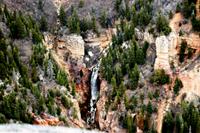 over the edge of the great chasm of the Canyon. It was a breathtaking, exhilarating experience as I watched waterfalls cascade thousands of feet below and falcons glide effortlessly into the rocky purple mountain majesty.
over the edge of the great chasm of the Canyon. It was a breathtaking, exhilarating experience as I watched waterfalls cascade thousands of feet below and falcons glide effortlessly into the rocky purple mountain majesty.After the excitement of the helicopter adventure, I stopped with friends to eat lunch at a point overlooking the South Rim of the Canyon, which averages 7,000 feet above sea level and is open 365 days a year, seven days a week. After lunch, stroll down to the visitor’s center and gift shop before discovering the Hopi House art gallery, and wander through El Tovar, a magnificent lodge which is a handsome historic hotel on the edge of the Canyon.

With one last look over the edge of the South Rim, I said goodbye to the Canyons as a train whistle signaled the arrival of the Grand Canyon Railway’s afternoon train.
The Grand Canyon Railway – Gateway to the Grand Canyon
“All aboard!” the conductor announced at the log-styled Santa Fe station, just below the Grand Canyon lodge at El Tovar. Soon the train
 chugged along the tracks as I sipped an Arizona Sunset from an over-stuffed leather chair in the caboose. Today’s train signals the rebirth of the way travelers used to journey to the Grand Canyon from Williams—via railway—and it is still the most beautiful way to travel. There on the train, just as our leisurely tea time was about to end and our five o’clock cocktail hour was about to begin, a band of rough riding cowboys raced on horseback alongside the train, guns a blazing, to stage a robbery.
chugged along the tracks as I sipped an Arizona Sunset from an over-stuffed leather chair in the caboose. Today’s train signals the rebirth of the way travelers used to journey to the Grand Canyon from Williams—via railway—and it is still the most beautiful way to travel. There on the train, just as our leisurely tea time was about to end and our five o’clock cocktail hour was about to begin, a band of rough riding cowboys raced on horseback alongside the train, guns a blazing, to stage a robbery.  It was all in good fun, and some even stopped for photos, while other cowboys and Indians entertained us with song.
It was all in good fun, and some even stopped for photos, while other cowboys and Indians entertained us with song.That same train hosts Polar Express adventures in the winter for children who want to re-live the exciting Christmas story told in the popular book and film.
Williams
I was sad to leave the Grand Canyon Railway and the old caboose that had slipped through lush, tree-lined high country, but w
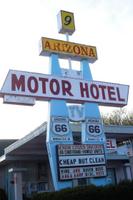 hen I disembarked at the station in the famous Route 66 town of Williams, it was like a scene from an old movie as children, parents, horses, cowboys, and stage coaches met the trains at the bustling station. There in Williams, I stayed at the lovely Grand Canyon Railway Hotel and enjoyed the biggest beef ribs I’d ever eaten (slathered with Jack Daniels and Orange Juice BBQ sauce) at the Old West-styled Winchester Steak House, and then ended the day going back in time with a visit to a classic Route 66 1950s soda fountain and ice cream parlor called Twisters. Once again the beautiful Mount Humphrey greeted us in the distance. The highest peak in Arizona, it is said to be home to the Hopi gods, the Kachinas.
hen I disembarked at the station in the famous Route 66 town of Williams, it was like a scene from an old movie as children, parents, horses, cowboys, and stage coaches met the trains at the bustling station. There in Williams, I stayed at the lovely Grand Canyon Railway Hotel and enjoyed the biggest beef ribs I’d ever eaten (slathered with Jack Daniels and Orange Juice BBQ sauce) at the Old West-styled Winchester Steak House, and then ended the day going back in time with a visit to a classic Route 66 1950s soda fountain and ice cream parlor called Twisters. Once again the beautiful Mount Humphrey greeted us in the distance. The highest peak in Arizona, it is said to be home to the Hopi gods, the Kachinas.Arizona Rocks
The Grand Canyon is truly a national treasure, and Arizona rocks! But more than just enjoying the scenery of the magnificence of the Canyon, the beautiful people I
 met along the way were the true joys of my journey. Meeting other travelers who love this land as much as I do reminded me what a treasure our nation really is. America the beautiful?
met along the way were the true joys of my journey. Meeting other travelers who love this land as much as I do reminded me what a treasure our nation really is. America the beautiful?Yes, it is!
For more information about beautiful Arizona and the Grand Canyon, go to these Web sites:
Grand Canyon National Park
Official site from the National Park Service. Provides park maps, information on activities, NPS services, and a Grand Canyon trip planner.
<www.nps.gov/grca>
Grand Canyon Railway
Book reservations online for one of five classes of service on a vintage train to the Grand Canyon
<http://www.thetrain.com/>
Flagstaff Convention & Visitor Bureau
<http://www.flagstaffarizona.org/>
The Museum Club Historic roadhouse in Flagstaff.
<http://www.museumclub.com/>
Williams Convention & Visitor Bureau
<http://www.williamsaz.com/>
Page Convention & Visitor Bureau
<http://www.pageaz.com/>
Detours "Off the Beaten Path" Tours
<http://www.detoursaz.com/>
Info and links to everything in the region
<http://www.arizonarocks.com/>


 movie, three times, in 3D! He had even been to a birthday party at the old railroad museum in San Antonio, too. But one morning as we sat waiting at a railroad crossing, as Reid pointed and shrieked with glee as we counted every car, it occurred to me that the little fellow in the backseat had never actually been on a real train.
movie, three times, in 3D! He had even been to a birthday party at the old railroad museum in San Antonio, too. But one morning as we sat waiting at a railroad crossing, as Reid pointed and shrieked with glee as we counted every car, it occurred to me that the little fellow in the backseat had never actually been on a real train.


